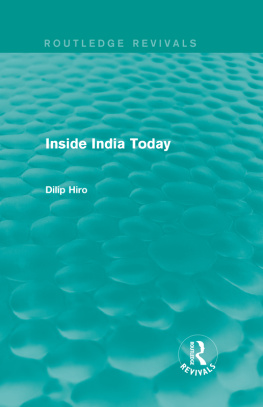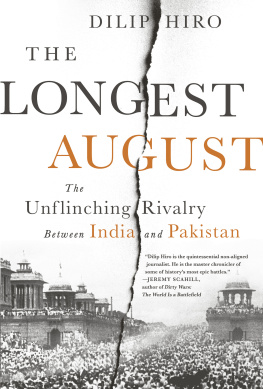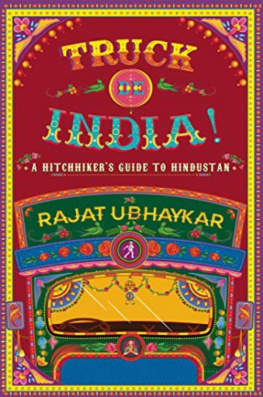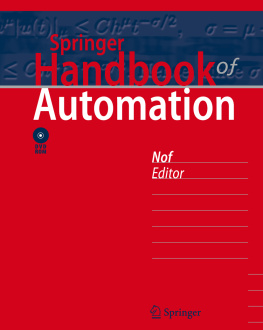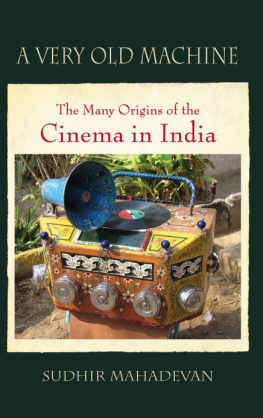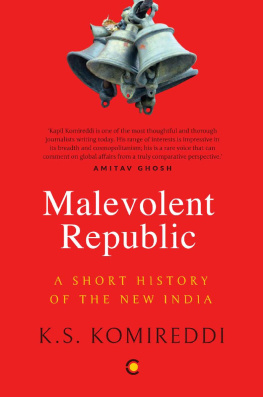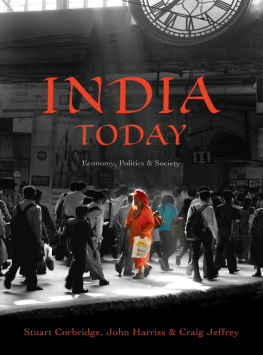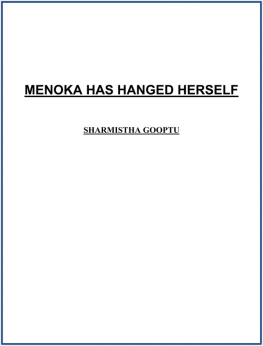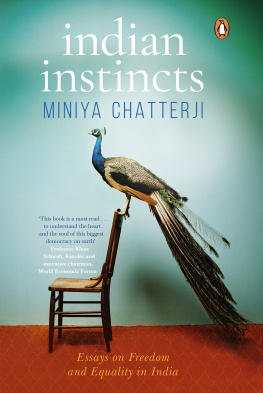Hiro - Inside India Today
Here you can read online Hiro - Inside India Today full text of the book (entire story) in english for free. Download pdf and epub, get meaning, cover and reviews about this ebook. City: India, year: 2013, publisher: Taylor & Francis (CAM);Routledge, genre: Detective and thriller. Description of the work, (preface) as well as reviews are available. Best literature library LitArk.com created for fans of good reading and offers a wide selection of genres:
Romance novel
Science fiction
Adventure
Detective
Science
History
Home and family
Prose
Art
Politics
Computer
Non-fiction
Religion
Business
Children
Humor
Choose a favorite category and find really read worthwhile books. Enjoy immersion in the world of imagination, feel the emotions of the characters or learn something new for yourself, make an fascinating discovery.
- Book:Inside India Today
- Author:
- Publisher:Taylor & Francis (CAM);Routledge
- Genre:
- Year:2013
- City:India
- Rating:3 / 5
- Favourites:Add to favourites
- Your mark:
- 60
- 1
- 2
- 3
- 4
- 5
Inside India Today: summary, description and annotation
We offer to read an annotation, description, summary or preface (depends on what the author of the book "Inside India Today" wrote himself). If you haven't found the necessary information about the book — write in the comments, we will try to find it.
Inside India Today — read online for free the complete book (whole text) full work
Below is the text of the book, divided by pages. System saving the place of the last page read, allows you to conveniently read the book "Inside India Today" online for free, without having to search again every time where you left off. Put a bookmark, and you can go to the page where you finished reading at any time.
Font size:
Interval:
Bookmark:
Routledge Revivals
Inside India Today
Events in the Indian sub-continent during the 1970s, where, in the summer of 1975, the ruling party engineered a constitutional coup by declaring a national emergency, re-emphasised the need for a fuller understanding of Indias social system and people. First published the following year, in 1976, Inside India Today attempted to fulfil that need. Drawing on personal interviews, conducted during his two years travels throughout the country collecting a mass of first hand evidence, and on various surveys and studies published in the press, the author sketches a broad portrait of Indian life in the villages and cities. Hiro relates this research to the existing socio-political structure of the time: the constitutional framework, the electoral system, the performance of the Indian National Congress and the Communist system. Written in an accessible, engaging style and containing a wealth of information and insight, Inside India Today is a major contribution towards the scholarship surrounding this complex and fascinating country.
Few journalists have been known to venture beyond the countrys provincial capitals into the great out there, where four out of every five Indians live. To have done it as Dilip Hiro did makes for absorbing reading - Claire Sterling, The New York Times Book Review
The best book on India to have appeared for a long time - Walter Schwarz, The Guardian
What makes his book essential reading is its concise encapsulation of the bewildering complexity of Indias pluralistic political and economic life within a framework that is accessible without being oversimplified - Zareer Masani, The Observer
A major reference work on a fascinating but complex country - Phillip Knightley, The Sunday Times
Inside India Today
Dilip Hiro

First published in 1976
by Routledge & Kegan Paul Ltd
This edition first published in 2013 by Routledge
2 Park Square, Milton Park, Abingdon, Oxon, OX14 4RN
Simultaneously published in the USA and Canada
by Routledge
711 Third Avenue, New York, NY 10017
Routledge is an imprint of the Taylor & Francis Group, an informa business
1976 Dilip Hiro
The right of Dilip Hiro to be identified as author of this work has been asserted by him in accordance with sections 77 and 78 of the Copyright, Designs and Patents Act 1988.
All rights reserved. No part of this book may be reprinted or reproduced or utilised in any form or by any electronic, mechanical, or other means, now known or hereafter invented, including photocopying and recording, or in any information storage or retrieval system, without permission in writing from the publishers.
Publishers Note
The publisher has gone to great lengths to ensure the quality of this reprint but points out that some imperfections in the original copies may be apparent.
Disclaimer
The publisher has made every effort to trace copyright holders and welcomes correspondence from those they have been unable to contact.
A Library of Congress record exists under LC control number: 77076161
ISBN 13: 978-0-415-93115-4 (hbk)
ISBN 13: 978-0-203-38099-4 (ebk)
DILIP HIRO
INSIDE INDIA TODAY

First published in 1976
by Routledge & Kegan Paul Ltd
39 Store Street,
London WCIE 7DD and
Broadway House,
Newtown Road,
Henley-on-Thames,
Oxon RG9 IEN
Set in Monotype Imprint 101 by
Kelly, Selwyn & Co., Melksham, Wiltshire and printed in Great Britain by
Unwin Bros. Ltd.
Dilip Hiro 1976
No part of this book may be reproduced in any form without permission from the publisher, except for the quotation of brief passages in criticism
ISBN 0 7100 8452 8
To Jeanne S.
My initial research on India, conducted some six years ago, made me realize the absence of a single, comprehensive book, which informs the general reader, Indian or non-Indian, as to how this most complex political entity in the world functions at both the popular and institutional levels. It also made me realize that such a book was needed, and that the best approach to the project would be to combine library research with extensive field work.
And, over the next few years, this is what I did.
I collected material for the book by interviewing people throughout the country, and perusing several newspapers and periodicals, and dozens of specialist books, which often deal with no more than an aspect or two of the Indian polity. I spent the best part of nineteen months from October 1970 to April 1972 travelling around the sub-continent, conducting informal and formal interviews. I covered almost all the constituent States of the Republic; and in each State I visited the capital and at least two villages.
As someone familiar with half a dozen Indian languages which are spoken in the northern, central and western parts of the country I conversed with my interviewees, in these regions, directly. Elsewhere, I had an interpreter with me. In every village I visited, I talked to members of different social strata: landless labourers, poor peasants, middle peasants, rich farmers, landlords, and artisans. Similarly, in the cities, I interviewed menial workers, industrial proletariat, petty traders, white collar employees, professionals and government bureaucrats. I conducted these interviews, without a set questionnaire, talking informally, changing and directing conversation as I went along. My intention was to secure first-hand information about the socio-economic status of my subject, as seen by him, and his social and political views in fairly simple, direct terms.
I followed a similar technique while interviewing journalists, academics, political leaders, party workers, trade unionists, and industrialists. But my questions, in their case, were designed primarily to seek their views on, and analysis of, the social order and political events. These interviews, thus, became not only a source of information to me, but also analysis.
Further information and analysis came from various Indian newspapers and periodicals, published almost always in English. (This may seem unrepresentative, but is not, because the small minority that reads, writes and speaks English dominates the political, economic, and intellectual life of the country.) Until the imposition of emergency and censorship, in June 1975, the press in India was, theoretically speaking, free. In practice, however, most of the popular publications, which command a disproportionately large section of the total newspaper circulation, were either guarded in their criticism of the ruling party the centrist Indian National Congress or attacked it almost invariably from a rightist position. This was so for political and commercial reasons, which are explained, at some length, in (pp. 2434). The task of the free press was therefore performed mainly by the official organs of various political parties, and a few small, independent journals of opinion. Among the latter category, the Economic and Political Weekly deserves a special mention. A liberal, radical, small-circulation periodical, published in Bombay, it remains (within the current restrictions on the press) well-informed and perceptive, in both its editorials and the dispatches of its correspondents.
Finally, the books on India: there is by now a sizeable library of specialist books on the country, written by journalists (often Indian) or academics (both Indian and Western) ; and I went through most of it. Whatever the subject of the book, or the nationality of the author, none of them seemed antagonistic towards, or highly critical of, the present socio-political system; and none recommended anything more revolutionary than a few reforms
Next pageFont size:
Interval:
Bookmark:
Similar books «Inside India Today»
Look at similar books to Inside India Today. We have selected literature similar in name and meaning in the hope of providing readers with more options to find new, interesting, not yet read works.
Discussion, reviews of the book Inside India Today and just readers' own opinions. Leave your comments, write what you think about the work, its meaning or the main characters. Specify what exactly you liked and what you didn't like, and why you think so.

